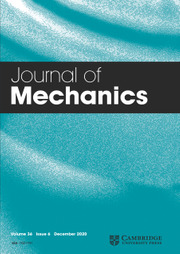Article contents
Implicit Virtual Boundary Method for Moving Boundary Problems on Non-Staggered Cartesian Patch Grids
Published online by Cambridge University Press: 25 May 2017
Abstract
A simple numerical method is proposed in the paper for fluid flow around a moving boundary of irregular shape. The unsteady term is discretized with the implicit scheme such that large time step is allowed. All of the computations are performed on non-staggered Cartesian grid system. Fine Cartesian patch grid system covering the moving object is employed to resolve the solution around the solid body. A closed curve defined by connecting the solid grid points adjacent to the solid-liquid interface is referred to as virtual boundary. The narrow irregular strip of solid between the virtual boundary and the actual solid-fluid interface is called pseudo-fluid. The general fluid region consisting of both fluid and pseudo-fluid is a regular domain that can be efficiently solved with conventional numerical method. In this connection, external force is imposed at each fluid grid point adjacent to the solid-fluid interface to compensate for the numerical error arising from the assumption of pseudo-fluid. The solution procedure is iterated until the required external force converges. Accuracy of the new numerical method is validated through three test problems. The numerical method then is used to investigate the flow induced by the flapping wings of a tethered dragonfly in literature. The corresponding CFL numbers of the four examples are infinity, 20, 100, and 3.29.
- Type
- Research Article
- Information
- Creative Commons
- This is an Open Access article, distributed under the terms of the Creative Commons Attribution licence (http://creativecommons.org/licenses/by/4.0/), which permits unrestricted re-use, distribution, and reproduction in any medium, provided the original work is properly cited.
- Copyright
- Copyright © The Society of Theoretical and Applied Mechanics 2017
References
- 1
- Cited by




